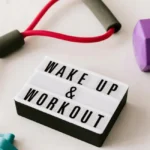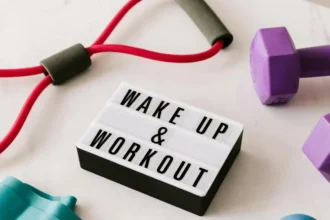
Did you know that 86% of professionals spend their entire workday sitting? According to the World Health Organization, physical inactivity is the fourth leading risk factor for global mortality. Yet, the most common excuse for skipping exercise remains “I don’t have time.”
If you’re a busy professional struggling to fit fitness into your packed schedule, you’re not alone. The good news? You don’t need hours at the gym or expensive equipment to get started. These beginner workouts for busy professionals are designed to work around your schedule, not against it. In just 15-30 minutes, you can boost your energy, improve your health, and enhance your productivity.
The Busy Professional’s Fitness Challenge
Modern work culture presents unique obstacles to maintaining an active lifestyle. Long office hours, back-to-back meetings, and demanding deadlines leave little room for traditional gym sessions. Many professionals find themselves too drained after work to consider exercising, while morning schedules are already packed with commutes and preparations.
The solution isn’t finding more time but making better use of the time you have. Quick workouts for professionals can be just as effective as longer sessions when structured properly and performed consistently.
Benefits of Regular Exercise for Professionals
Regular physical activity offers remarkable advantages for working professionals that extend far beyond physical health. Harvard Medical School research shows that morning exercise can increase productivity by up to 23% throughout the day.
Exercise acts as a natural stress reliever, helping you manage workplace pressure more effectively. When you engage in physical activity, your body releases endorphins that combat cortisol, the stress hormone that can negatively impact decision-making and creativity. Additionally, regular exercise improves blood flow to the brain, enhancing focus and mental clarity during important meetings and complex problem-solving tasks.
Time-efficient fitness routines also contribute to better work-life balance. Instead of viewing exercise as another task competing for your time, these quick sessions become energy boosters that actually give you more productive hours in your day. Long-term benefits include reduced risk of chronic diseases, better sleep quality, and improved immune function, meaning fewer sick days and more consistent performance at work.
Also read: How to Start Working Out: Complete Beginner’s Guide to Fitness (2025)
Essential Equipment-Free Workouts
15-Minute Morning Energizer
Start your day with this energizing no equipment exercise routine that requires minimal space and zero preparation time. This morning workout combines cardiovascular exercise with strength training to jumpstart your metabolism and mental alertness.
Complete 3 rounds of:
- 30 seconds of jumping jacks (gets your heart rate up and warms your entire body)
- 20 bodyweight squats (strengthens legs and glutes while improving posture)
- 15 push-ups (modify on knees if needed; builds upper body and core strength)
- 30-second plank hold (develops core stability crucial for desk workers)
- Rest 1 minute between rounds
This morning routine takes exactly 15 minutes and can be done in your bedroom, hotel room, or any small space. The combination of movements targets all major muscle groups while providing cardiovascular benefits.
20-Minute Lunch Break HIIT
High-intensity interval training (HIIT) maximizes results in minimal time, making it perfect for busy schedule exercises. Research published in the Journal of Sports Medicine shows that HIIT can provide similar cardiovascular benefits to longer, moderate-intensity workouts.
Complete 4 rounds of:
- 45 seconds of high knees (brings intensity while improving coordination)
- 45 seconds of mountain climbers (full-body exercise that builds endurance)
- 45 seconds of modified burpees (start with step-backs instead of jumps)
- 45 seconds of rest
This office workout alternative can be performed in business attire if you have a private space or change of clothes. The total time commitment including cool-down fits perfectly into a standard lunch break.
30-Minute Evening Wind-Down
This comprehensive home workout for beginners focuses on strength building while helping you transition from work mode to relaxation. Unlike high-intensity morning or lunch routines, this evening session emphasizes controlled movements and includes stress-relieving stretches.
Strength Circuit (20 minutes):
- Bodyweight squats (3 sets of 12-15)
- Modified push-ups (3 sets of 8-12)
- Lunges (3 sets of 10 each leg)
- Glute bridges (3 sets of 15)
- Standing calf raises (3 sets of 20)
Core Focus (5 minutes):
- Plank variations (front and side planks)
- Dead bugs (great for professionals with back issues)
- Modified bicycle crunches
Stretching Sequence (5 minutes):
- Neck and shoulder stretches (essential for desk workers)
- Hip flexor stretches
- Spinal twists
- Deep breathing exercises
Desk-Based Micro Workouts
Even the busiest professionals can incorporate movement throughout their workday with these discreet desk exercises. These micro workouts help combat the negative effects of prolonged sitting and can be performed between meetings.
Seated Exercises:
- Ankle rolls and calf raises under your desk
- Seated spinal twists (hold for 15 seconds each direction)
- Shoulder blade squeezes (10 repetitions every hour)
- Seated leg extensions (alternate legs for 30 seconds)
Standing Breaks:
- Wall push-ups during phone calls
- Standing desk stretches
- Stair climbing when possible
- Walking meetings for appropriate discussions
These office workouts require no equipment and won’t leave you sweating or out of breath, making them perfect for professional environments.
Creating a Sustainable Routine
Success with beginner workouts for busy professionals comes from consistency, not perfection. Start with just three workout days per week, treating these sessions as non-negotiable appointments in your calendar.
Schedule your time-efficient fitness sessions during your most realistic time slots. Morning people should capitalize on early energy, while night owls might prefer evening sessions. The key is choosing times when you’re least likely to face competing priorities.
Track your progress using simple metrics like energy levels, sleep quality, and how many workouts you complete each week. Avoid complex tracking that adds stress to your routine. Instead, focus on building the habit of regular movement.
Adjust workout intensity based on your current energy levels and schedule. On extremely busy days, even a 10-minute desk workout is better than skipping exercise entirely. This flexibility prevents all-or-nothing thinking that derails many fitness attempts.
Common Beginner Mistakes to Avoid
New exercisers often sabotage their success by attempting too much too soon. Start with shorter, easier versions of these routines and gradually increase intensity and duration over 4-6 weeks.
Never skip warm-up movements, even in quick workouts for professionals. Spending 2-3 minutes on light movement and dynamic stretches prevents injury and improves performance.
Rest days are crucial for muscle recovery and preventing burnout. Plan at least one full rest day between intense workout days, though gentle stretching or walking is always beneficial.
Perfectionism kills consistency. Focus on showing up regularly rather than executing perfect workouts. A mediocre workout completed is infinitely better than a perfect workout skipped.
Tips for Staying Motivated
Set realistic, specific goals like “complete three 15-minute workouts this week” rather than vague objectives like “get fit.” Achievable targets build confidence and momentum.
Find an accountability partner among colleagues or friends who share similar time constraints. Share your workout schedule and check in regularly about your progress.
Celebrate small victories by acknowledging each completed workout. Consider non-food rewards like new workout clothes or equipment upgrades as you build consistency.
Prepare everything the night before. Lay out workout clothes, clear your exercise space, and eliminate any barriers that might prevent you from starting your routine.
Conclusion
Fitness doesn’t require hours at the gym or complicated equipment. These beginner workouts for busy professionals prove that consistency trumps duration every time. Whether you have 15 minutes in the morning, 20 minutes at lunch, or 30 minutes in the evening, you can build strength, improve health, and boost productivity.
The hardest part is starting. Choose one routine that fits your schedule and commit to trying it for one week. Your future, more energized self will thank you for taking this first step toward a healthier, more balanced professional life.
Frequently Asked Questions
How often should beginners exercise as busy professionals? Start with 3 days per week, allowing rest days between sessions. This frequency is manageable for most schedules while providing enough stimulus for fitness improvements. You can gradually increase to 4-5 days as your fitness level and time management improve.
Can these workouts really be effective in such short time periods? Absolutely. Research shows that short, intense workouts can provide similar benefits to longer sessions. The key is consistency and progressive overload. These time-efficient fitness routines focus on compound movements that work multiple muscle groups simultaneously.
What if I can’t do push-ups or other exercises properly? Every exercise can be modified for beginners. Do push-ups against a wall or on your knees, step back instead of jumping in burpees, and hold planks for shorter durations. Focus on proper form over intensity, and strength will develop naturally over time.
Do I need to change my diet to see results from these workouts? While exercise alone provides significant health benefits, combining these beginner workouts for busy professionals with mindful eating habits will accelerate results. You don’t need a complete diet overhaul, but staying hydrated and eating balanced meals will support your energy levels and recovery.
Also read: The Ultimate Guide to Eating Healthy: What to Eat, What to Avoid, and How to Build Better Habits
How do I stay motivated when my work schedule is unpredictable? Flexibility is key for busy schedule exercises. Have backup plans like 10-minute desk workouts for extremely busy days. Remember that some movement is always better than none. Consider these sessions as investments in your work performance rather than additional tasks competing for your time.
Also read: How to Stay Motivated When You Hate Working Out: 7 Game-Changing Tips





